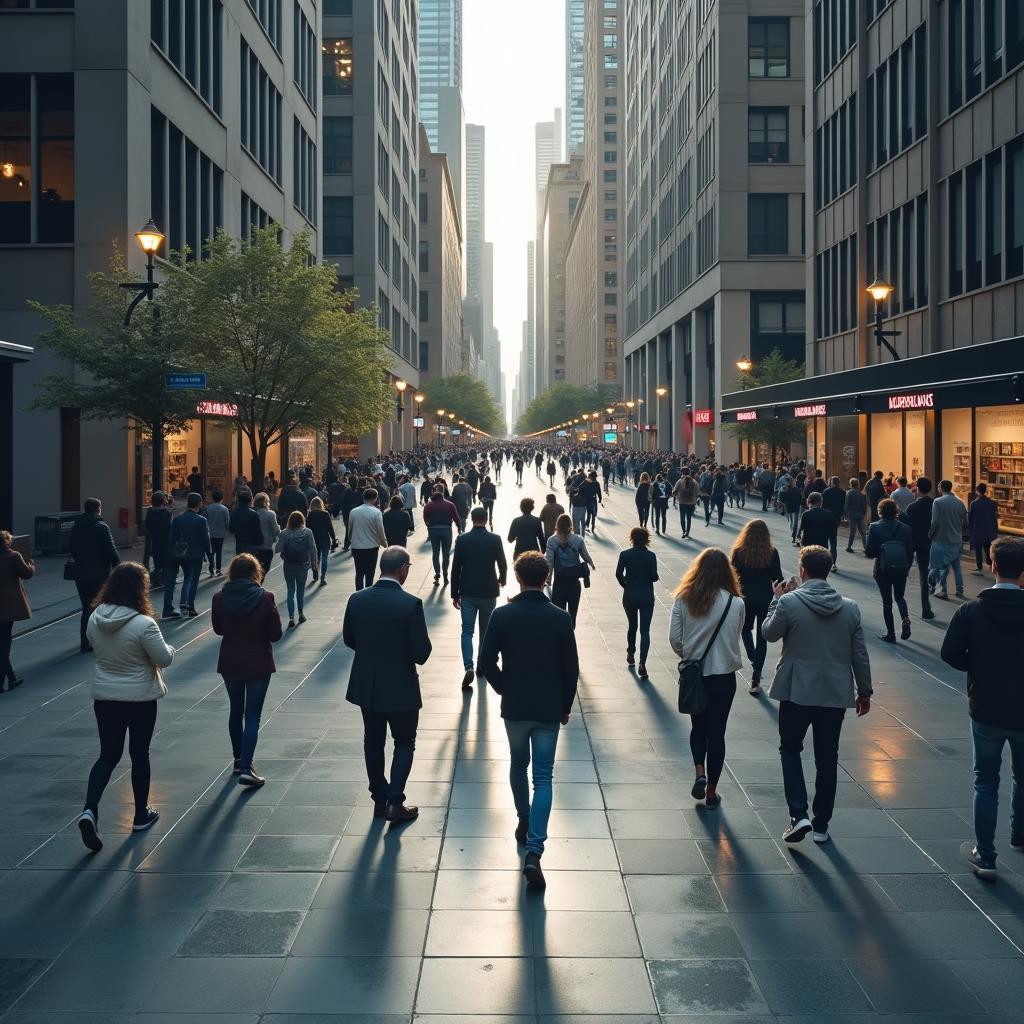Urbanization and its social impacts have consistently appeared in IELTS Writing Task 2, particularly in questions about community development, social cohesion, and urban planning. Based on analysis of past IELTS exams, this topic has appeared roughly 3-4 times annually since 2019, making it a highly relevant subject for test preparation.
Table Of Contents
The effects of urbanization on green spaces demonstrates similar patterns in question formation. Let’s examine a recent test question:
Some people believe that rapid urbanization has led to increased social isolation and reduced community cohesion. To what extent do you agree or disagree with this statement?
Question Analysis
This is an agree/disagree essay requiring:
- Clear position on the relationship between urbanization and social connections
- Well-developed arguments supported by specific examples
- Balanced analysis of urbanization’s social impacts
- Logical conclusion based on the presented arguments

Sample Essay 1 (Band 8.5)
The rapid transformation of rural areas into urban centers has sparked debate about its social consequences. While some argue that urbanization fragments communities, I partially agree with this view as the reality is more nuanced, with both positive and negative effects on social inclusion.
Urbanization can indeed contribute to social isolation in several ways. The vertical development of cities, with people living in high-rise apartments, often reduces spontaneous interactions that were common in traditional neighborhoods. Furthermore, the fast-paced urban lifestyle, coupled with long commuting times, leaves little opportunity for community engagement. For instance, in metropolises like Tokyo or Shanghai, many residents spend several hours daily traveling to work, significantly diminishing their time for social activities.
However, urbanization also creates new opportunities for social connection. Modern cities offer diverse platforms for community building, from shared workspaces to cultural centers and recreational facilities. Digital technology in urban areas enables people to maintain existing relationships and form new ones across geographical boundaries. The concentration of people with similar interests in cities facilitates the formation of special interest groups and communities that might not be possible in rural settings.
Moreover, well-planned urban development can actively promote social inclusion. Cities with thoughtful design incorporating community spaces, pedestrian-friendly zones, and public gathering areas can foster social interaction. For example, Singapore’s neighborhood planning includes mandatory community centers and shared spaces, effectively maintaining social cohesion despite rapid urbanization.
In conclusion, while urbanization presents challenges to traditional forms of community interaction, it simultaneously creates new opportunities for social connection. The key lies in conscious urban planning that prioritizes community needs and social spaces.
Sample Essay 2 (Band 6.5)
These days, many people think that urbanization makes people feel lonely and reduces community spirit. I agree that this is a serious problem in modern cities.
First, living in big cities can make people feel isolated. When people move to cities, they often live far from their families and old friends. Many people live alone in small apartments and don’t know their neighbors. For example, in big cities like New York, some people don’t even know who lives next door to them.
Second, modern urban life is very busy and stressful. People work long hours and spend lots of time traveling to work. After work, they are too tired to join community activities. They prefer to stay at home and watch TV or use their phones instead of meeting others.
However, cities also provide some chances for social connection. There are many clubs, sports centers, and community groups where people can meet others with similar interests. Social media and technology also help urban people stay connected with friends and family.
In conclusion, I think urbanization does cause social isolation, but there are ways to solve this problem. Cities should create more community spaces and encourage people to participate in local activities.
Band Score Analysis
Band 8.5 Essay:
- Task Response: Clear position with nuanced analysis
- Coherence & Cohesion: Well-organized paragraphs with effective linking
- Lexical Resource: Sophisticated vocabulary (“spontaneous interactions,” “geographical boundaries”)
- Grammatical Range: Complex structures with minimal errors
Band 6.5 Essay:
- Task Response: Clear but simpler position
- Coherence & Cohesion: Basic organization with some linking
- Lexical Resource: Adequate but less sophisticated vocabulary
- Grammatical Range: Mix of simple and complex structures
Key Vocabulary
- social cohesion (n) /ˈsəʊʃəl kəʊˈhiːʒən/ – unity between social groups
- spontaneous interactions (n) /spɒnˈteɪniəs ˌɪntərˈækʃənz/ – natural, unplanned social contact
- metropolitan (adj) /ˌmetrəˈpɒlɪtən/ – relating to a large city
- community engagement (n) /kəˈmjuːnəti ɪnˈɡeɪdʒmənt/ – involvement in community activities
- urban development (n) /ˈɜːbən dɪˈveləpmənt/ – city growth and planning
High-Scoring Sentence Patterns
- Complex Contrast: “While urbanization presents challenges to traditional forms of community interaction, it simultaneously creates new opportunities for social connection.”
- Cause-Effect: “The vertical development of cities, with people living in high-rise apartments, often reduces spontaneous interactions that were common in traditional neighborhoods.”
- Example Integration: “For instance, in metropolises like Tokyo or Shanghai, many residents spend several hours daily traveling to work, significantly diminishing their time for social activities.”
We encourage readers to practice writing their own essays on this topic and share them in the comments section for feedback and discussion.